“When a great teacher passes away, his body is no more, but to indicate that his mind is dwelling forever in an unchanging way in the dharmakaya—the path of truth, one will erect a stupa as a symbol of the mind of the Buddha.”– HH Dilgo Khyentse Rinpoche, spiritual master of Tibet...
BUDDHIST MONK, ENGULFED in voluminous robes, chants “Nam-myoho-renge-kyo” in an undertone, as he makes his way up the Sanchi hill to the stupa which stands at its very summit. Like many of his ilk, as well as for scores of other pilgrims and visitors, the tryst is with their belief, the quest universal—to attain salvation within, by venerating the physical symbol without.
For effectively, that is what the Sanchi stupas are. They are visual symbols of the Buddha, dating back to his lifetime and regarded as the core of Buddhist faith and worship. But burial mounds fashioned from earth and rock and containing relics, existed from as early as Neolithic times.
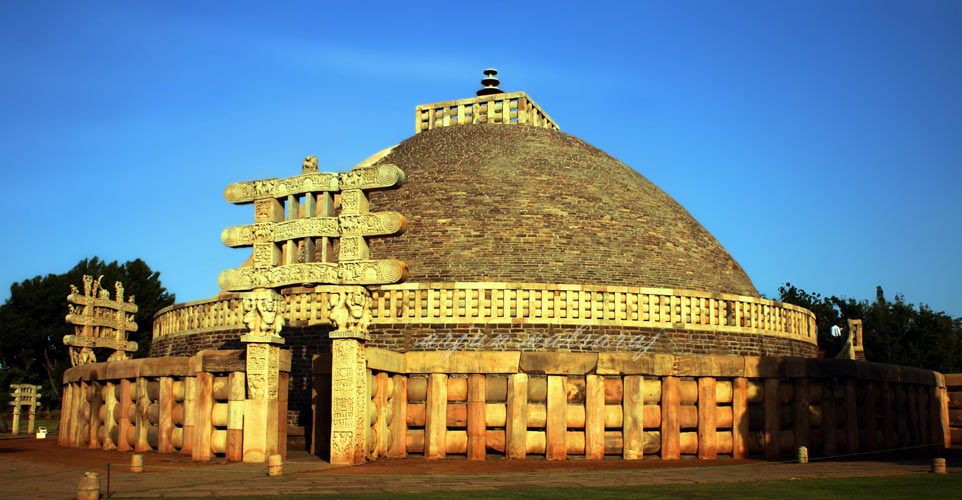
The word ‘stupa’ is said to have been derived from the Sanskrit root 'stu' meaning 'to worship' or 'to praise.' The origin of the Buddhist stupa stems from Buddha’s humility and restraint, which baulked at the idea of being worshipped. Buddha instructed his disciples to build stupas at various crossroads, to honour great kings and warriors. After his death, however, there was a general desire to pay tribute to his memory by building a stupa. It is said that eight princes fought for his ashes and bones and these relics were distributed to eight kingdoms and stupas were built over them. During Ashoka’s reign (c. 273-232 B.C.), they were redistributed and a portion is said to have been enshrined in the Great Stupa at Sanchi.
It is perhaps only in Buddhism that a particular structure has been recommended by its founder for worship and salvation, for the stupa enables the worshiper to not only think of the Buddha as an imminent reality (by regarding the stupa as a visual manifestation of the Buddha), but also epitomises his enlightenment and nirvana. In this way, the Buddhist stupa transcends its predecessor, the burial mound or tumulus, by shifting the emphasis from a particular relic to a higher transcendental actuality as realised by the Buddha, i.e. the Buddha's attainment and the worshiper’s goal.
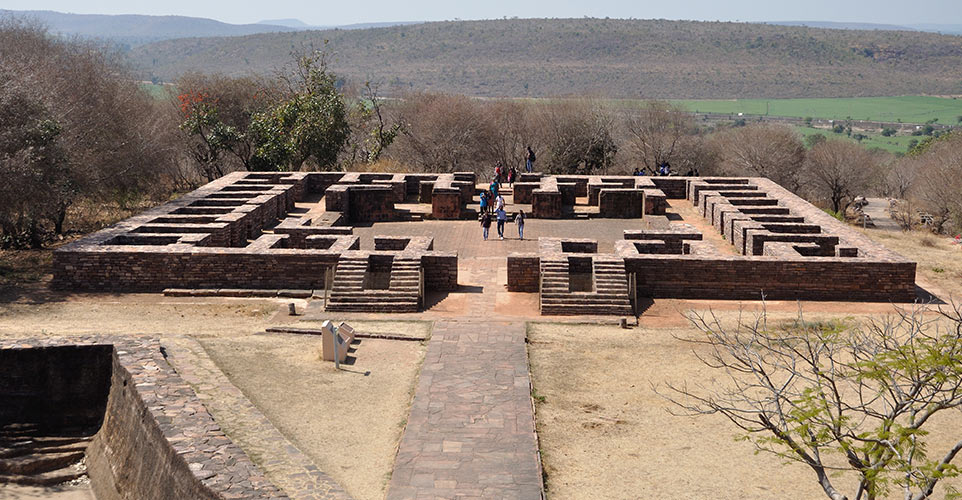
The monastery at Sanchi was originally constructed by Bimbisara, king of Magadha and Buddha’s contemporary. It owes its present form to renovations by Ashoka and the later Shunga kings, who through their support and patronage and established stupa worship as an institution in Buddhism.
A World Heritage Site, the main structure of the Great Stupa consists of a flattened hemispherical cupola or dome, called an anda, placed atop a cylindrical base. The anda, literally an egg, alludes not only to the shape, but to its deeper significance as a symbol of latent creative power. The anda was also intended as an architectural replica of the infinite dome of heaven, representing the cycle of death and rebirth (anda related to the universe in ancient Hindu mythology and was also sometimes called the garbha or womb). The harmika, located at the summit of the anda, symbolised the zenith beyond life and death (nirvana) and its resemblance to a sacrificial altar was of particular significance, for the attainment of nirvana required the sacrifice of the self and the world.
Of the more than 50 monuments that grace the Sanchi hilltop, the most elaborate is the Great Stupa. It is part of an entire complex of structures, mostly stupas, built between the 3rd Century BCE and the 12th Century AD.
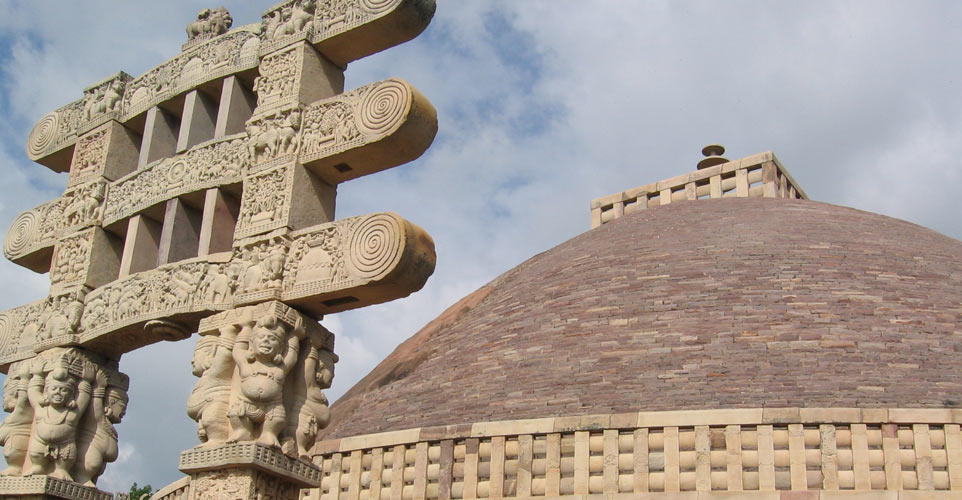
Sanchi is 68 kilometers north of Bhopal in the state of Madhya Pradesh. It is unique, not only for having the most perfect and well preserved stupas, but also for opening up a vista that spans about 1500 years, encompassing the genesis, the flowering and decay of Buddhist art and architecture—almost covering the entire range of Indian Buddhism. At first, this may seem surprising, since nowhere does Sanchi bear mention in Buddha’s life, nor was it the focus of any significant event in the history of Buddhism.
However, proximity to a city was of importance for Buddhist monasteries as the monks were obliged to go beg for alms as part of their monastic duties. But for the most part, they required the salubrious ambience of calm, open spaces outside noisy towns. For this reason large monastic communities sought a situation outside a city or on a busy trade route. The Emperor Ashoka saw Sanchi as an ideal place to give shape to his newly aroused zeal for Buddhism. It has always been a quiet, meditative place that was located near the very prosperous city of Vidisha. The success of the Buddhist settlement was due in great measure to the piety of the rich, mercantile community of the nearby city.
Emperor Ashoka laid the foundation of this important centre at Sanchi when he built a stupa and erected a monolithic pillar here. Ashoka built a total of eight stupas on the Sanchi hilltop, including the Great Stupa. A great number of stupas and other religious structures were added over the succeeding centuries.
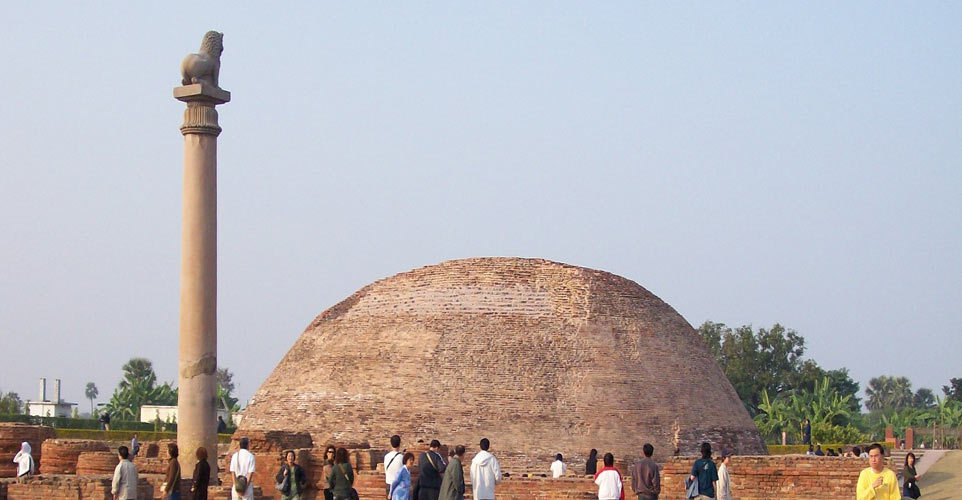
With the decline of Buddhism, the site decayed and was eventually completely forgotten. But, between 1912 and 1919, the structures were carefully restored to their present condition.
The Great Stupa of Sanchi underwent a complete reconstruction after wanton damage inflicted upon it in the middle of the second century BCE. The reconstruction consisted of a stone casing, a terrace with a double flight of steps, balustrades, a paved processional path and an umbrella and railing—all built of sandstone. Four elaborately carved gateways were added in the first century BCE.
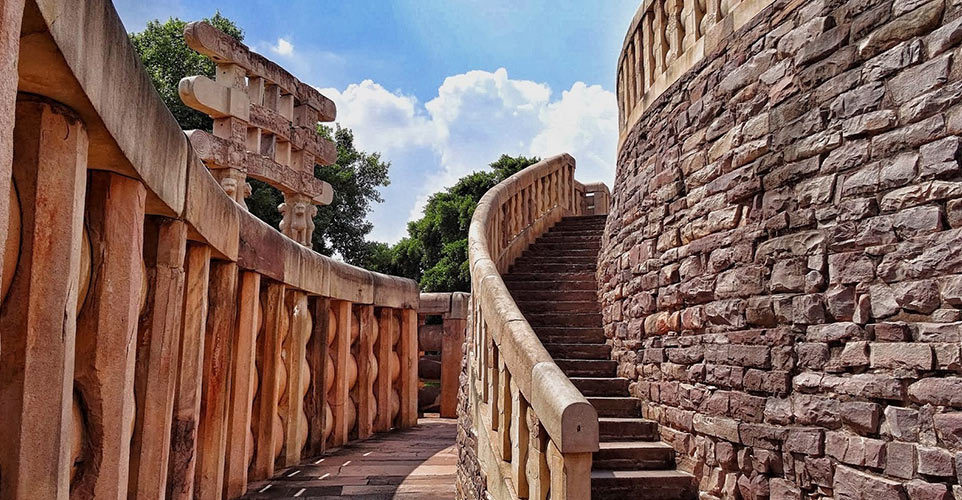
The last addition took place during the rule of the Guptas, sometime before 450 AD. By now effigies of the Buddha were permitted and four stone Buddhas were placed against the walls of the stupa facing the gates. Their haloes are elaborately carved.
The Great Stupa is a near perfect hemispherical dome measuring 120 ft across and about 54 ft high, which is topped by a triple parasol, and set within a square railing or harmika. A short way up from its base there is a raised terrace, enclosed by a fence, which is meant for the ritual circumambulation of the monument. A second stone- paved procession path at ground level is enclosed by an encircling stone balustrade, which can be reached from all four directions through four exquisitely carved gateways.
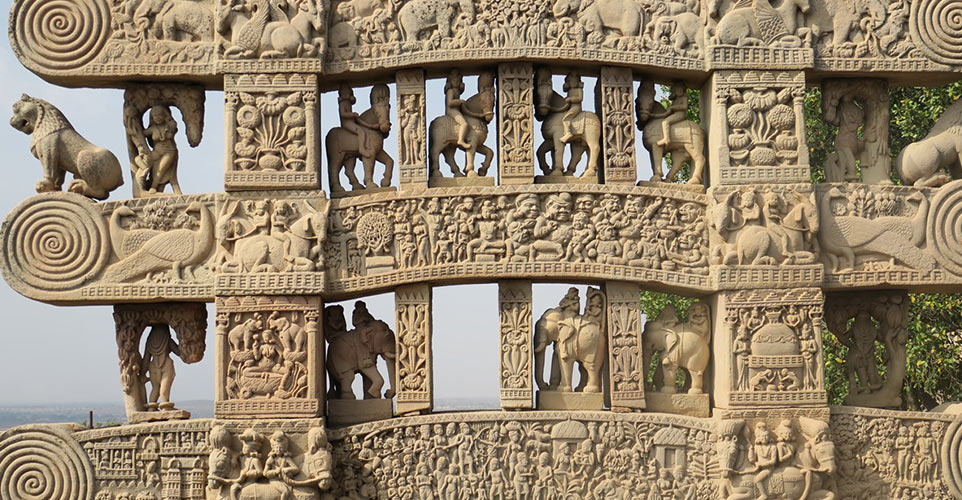
Stupas are generally made of brick and rubble or encased in masonry. The stupa at Sanchi encases one built earlier, of burnt bricks and mud, by the Emperor Ashoka.
The four gateways, or “toranas”constructed in 35 BC are the best forms of Buddhist expression one can find anywhere in the world. The gates are embellished with explicit carvings, depicting scenes from the life and times of Buddha.
The Ashoka Pillars are found scattered in the same area, some broken, some in shape. The crown is famous for its lions, which stand back to back, and which has been adopted as the national emblem of India. The pillars are also an excellent example of the Greco- Buddhist style of architecture, known for their aesthetic proportions and their exquisite structural balance.
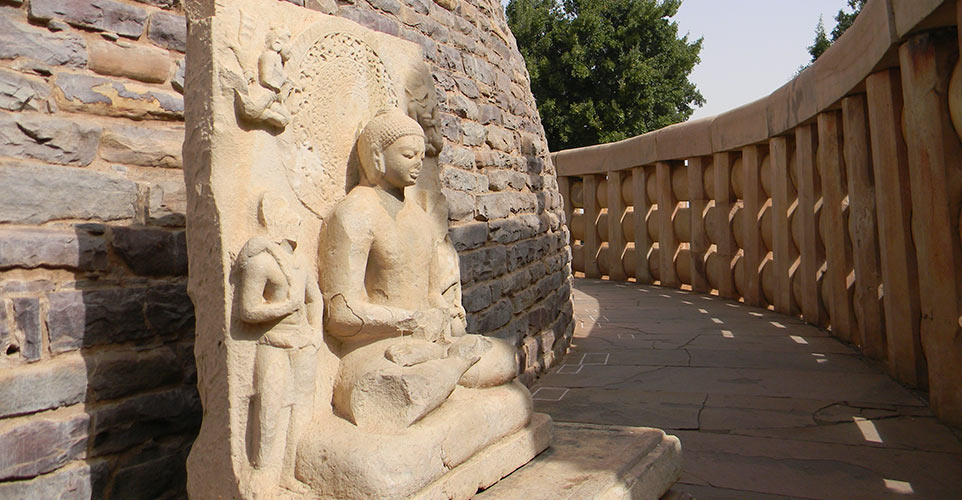
If museums give you a high then the museum at Sanchi is worth a visit. Maintained by the Archaeological Survey of India, it houses many items discovered during the excavation of the Sanchi area. Its prized possession is the lion crown from the Ashoka pillar. The museum also has a sizeable collection of utensils and other items used by the monks who lived here.
How to get there: You can reach Sanchi by road from Bhopal, capital of Madhya Pradesh, 46 km away. Regular flights and trains connect Bhopal to key cities of India.
